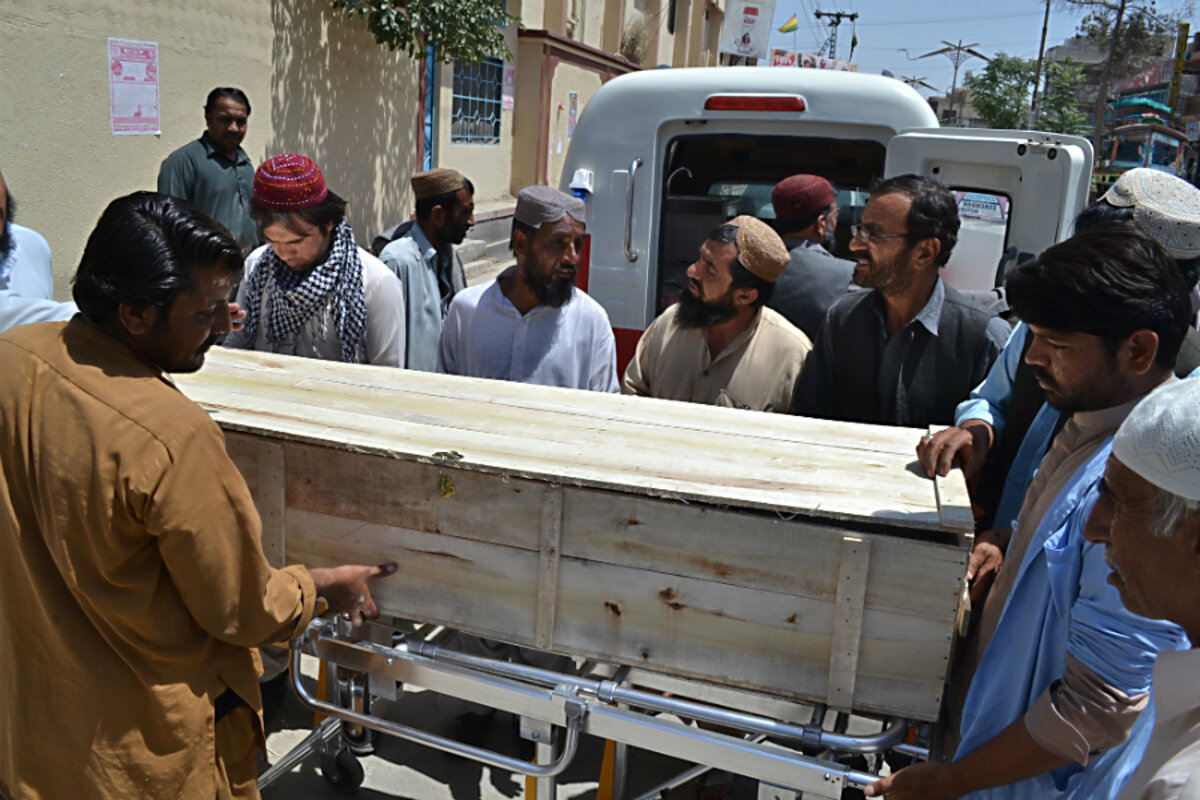How much did the US gain by taking out a Taliban leader?
Loading...
President Obama on Monday lauded the United States drone strike that killed the Afghan Talibanâs leader as âan important milestone.â
Counterinsurgency experts don't think the strike, by itself, will bring the Taliban to the bargaining table, as Mr. Obama urged in his statement. And some warn that even at their most successful, such targeted killings leave behind hatred that may later reemerge in more damaging forms.Â
But some experts see drone strikes as a useful if controversial tool â and one of the few at the Obama administration's immediate disposal â to pressure the Taliban.
At a time when the Taliban controls than at any time since 2001, the killing of Mullah Akhtar Mansour in Pakistan Saturday is a symbolic victory for the US and Afghan forces in their effort to stabilize Afghanistan.
Such strikes can help achieve several objectives, experts say. At the very least, they divert the focus of insurgent groups, forcing them to protect their leaders or to engage in leadership struggles. Senior Taliban leaders are trying to move quickly to  Mr. Mansourâs replacement, in the hope of preventing major fissures, according to reports.
In some instances, strikes against key terrorist leaders can cause the organization to collapse, draining it of expertise and leadership faster than it can be replenished.
"The Taliban should seize the opportunity to pursue the only real path for ending this long conflict â joining the Afghan government in a reconciliation process that leads to lasting peace and stability," Obama said.
But that is not likely to be the case with the Taliban, and Obama made no pronouncements that this was a game-changing moment.
Strikes such as the one Saturday can also bring challenges. They can be a boon for a terror recruitment, leading to more aggressive leaders and retaliation. Collateral damage to civilians, and killing terrorist leaders without due process, also can put the US in a negative spotlight.
Avi Dicter, former head of Israelâs internal security service, has made the case for killing terrorists when possible because there is a limited number of effective leaders â there is a âbottom to the barrel.â
But âthe Dicter philosophy requires that the âbarrel of terrorâ be drained more quickly than it is refilled from the well of resentment,â Alex de Waal, executive director of the World Peace Foundation, wrote in a last year.
So the effectiveness of drone strikes may hinge partly on how long-established a group is.
īĄĖý of targeted capture or kill strikes on insurgent-group leaders concluded that the strikes have played a significant role in diminishing the life of insurgent groups, wrote Brian C. Price at West Pointâs Counter Terrorism Center in a 2012 šĢ―ĮīóÉņ Science Monitor op-ed.
But his research also showed that this tactic was most effective when the groups were new â within their first 10 years. After 10 years, the effects were cut in half, and after 20 years such efforts were likely to have no effect on a group at all.
Based on those metrics, targeting the Taliban leadership might not be very effective as a core strategy. After being routed by US and Northern Alliance forces in 2001, the Taliban regrouped in 2003 and, especially since the drawdown of US forces in 2014, has continued to target US and Afghan forces.Â
The US adopted the tactic of assassinating high-profile leaders of terror groups at the beginning of the war on terror, following a strategy Israel used after the start of the second intifada in 2000.
âIsrael dramatically stepped up its targeting of Palestinian terrorists, killing more than 200 of them. This campaign worked. Targeted killings â combined with the security barrier, military operations, and improved intelligence â reduced Israeli deaths from a high of 172 in 2002 to less than 40 in 2005,â wrote Daniel Byman, director of the Center for Peace and Security Studies at Georgetown University, in a 2006 Los Angeles Times op-ed.  âEven more telling, this decline in deaths occurred during periods when the number of attempted attacks by Hamas increased, suggesting that the organization became less capable even though its hatred did not diminish.â
But since then, other instances have shown how, if hatred does not diminish, terror or insurgent groups often splinter and morph into newer and more violent forms. Iraq after the overthrow of Saddam Hussein has seen the rise of Al Qaeda in Iraq and now Islamic State.
Still, in key places where the US is seeking to counter terrorism, governments often arenât viable partners â making drone strikes something of a last resort.
âToo bad a silver bullet is exactly what the U.S. is counting on in countries like Iraq, Syria, Libya, and Yemen, where a lack of reliable partners on the ground make other strategies impossible,â Â Joshua Keating wrote.





